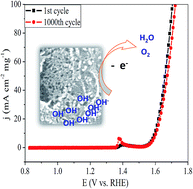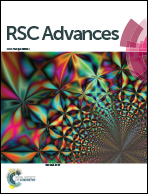Hierarchical porous activated carbon in OER with high efficiency†
Abstract
The oxygen evolution reaction (OER) has attracted much attention as it can be used to produce clean energy. Hierarchical porous activated carbon (HPAC) shows potential applications for the OER. HPAC derived from fallen leaves (Fraxinus chinensis) is prepared using a facile method, in which KOH and/or K2CO3 are used as activators. Characterization reveals that HPAC in the system of KOH/K2CO3 has a high surface area and possesses abundant hierarchical pores, which are favorable for mass transfer and charge transfer in the oxygen evolution reaction (OER). Acid washed HPAC displays relatively low activity and electrochemical tests demonstrate that ash composition may contribute to the OER. HPAC is a potential carbon-based catalyst that has prominent OER activity and durability.


 Please wait while we load your content...
Please wait while we load your content...